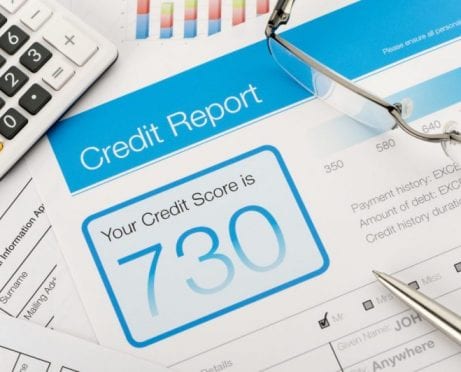
Eric Strausman
A credit score below 600 typically indicates bad credit, and shockingly, 21 percent of Americans fall below this line, according to Experian. That’s 68 million people. Bad credit is usually the result of late payments or going into default on a loan.
“When you have bad credit, it significantly decreases your appeal to lenders when you’re trying to acquire new debt,” says Nathalie Noisette, founder, entrepreneur, and credit expert. “If you are able to get approved for a loan or new line of credit with bad credit, you will be subject to higher interest rates because lenders see you as a consumer with a high default risk.”
Not only is your credit score affected, but the negative impact will reflect on your credit history, too. “Bad credit could last a lifetime if consumers do not fall in line with good credit habits,” Noisette says. “If a consumer has bad credit over a long period, they will have a hard time qualifying for new debt or may be subject to paying significantly high interest rates.”
The interest rate is not the only thing affected by bad credit, though. You may also be charged security deposits from utility companies, and landlords have the right to refuse to rent you an apartment.
Overcome Your Debt and Save Money
Why You Have Different Credit Scores
If you’ve checked your credit online before, you may wonder why the score you see is different from what lenders see. Because of the different algorithms that credit bureaus and lenders use, you can have several different credit scores.
Your credit score is constantly changing, but it shouldn’t differ wildly between scoring models.
If it does, this may indicate errors, so you should check your credit report as often as you can.
Two of the most common scoring models are VantageScore and FICO. Your FICO score, which ranges from 300 to 850, is widely used among lenders. This scoring model is constantly being updated and has slightly stricter standards than the VantageScore model.
VantageScore was created in 2006 as a competitor to FICO. It’s a model that compiles all three credit files from the major credit bureaus to come up with a single score. An older VantageScore model ranges from 501 to 990, while the newer 3.0 model will calculate your credit score to be somewhere between 300 and 850.
Keep in mind that while there are several different scoring models, they are all ranked from low to high. You want your credit score to be as high as possible so that you can receive a “good” or even “excellent” rating. This will lead to lower interest rate offers from lenders.
How to Get a Credit Card With Bad Credit
If you want to improve your credit score, a credit card is one of the best ways to do it. Your first step is to get all the information you need before applying. You can get a copy of your credit report yearly for free at AnnualCreditReport.com. With this knowledge, you can determine which strategy is right for you to rebuild your credit.
Next Step?
Having a bank account is a necessity for getting a credit card. Ensure your bank has low monthly or yearly fees and that you deposit some money into an account regularly. Even if it’s a small amount, it’ll help.
Decide what type of credit card you should get. Secured credit cards are better suited for those with bad credit. They require a deposit, which equals the limit on the card. So if you pay a $200 refundable deposit, your credit card limit will be $200.
Secured credit cards are a great way to repair your score if it’s a little on the lower side.
However, there’s a downside: These cards have higher interest rates.
Unsecured credit cards are far more difficult to get with bad credit. They’re also usually more sought after, as they have lower interest rates and higher limits.
“Acquiring an unsecured card is more difficult due to risk,” Noisette says. “When a creditor issues an unsecured card, they have determined that they can lend with a lower risk of the client defaulting. This is usually decided by assessing credit history and looking at the consumer’s income.”
The deposit you give on the secured credit card mitigates this risk somewhat, which is why people with lower credit scores are accepted. Regardless of the type of credit card, Noisette advises, it will help improve your credit score if used wisely and if payments are made in a timely manner.
Overcome Your Debt and Save Money
Credit Cards That Can Help Improve Your Score
As we saw above, any kind of credit card can improve your credit score if you use it correctly and pay it on time. There are a number of secured credit cards that require no credit score at all.
- The Discover it Secured Card is a favorite among many with bad credit. There’s no annual fee; you earn cash back on certain purchases at gas stations and restaurants up to $1,000 per quarter; and it’s a gateway to acquiring an unsecured credit card after a period of eight months — with responsible use, of course.
- The Citi Secured Mastercard is also a good option. There’s no annual fee, and your score will be reported to the three credit bureaus. Plus, the card offers a flexible payment due date. In other words, you can choose any date to meet your payment by. Unlike the Discover card, the Citi card doesn’t offer any rewards.
- The Capital One Secured Mastercard is similar to the Citi card above, but with one key difference: Depending on your individual situation, you may not have to equate your deposit to your limit. The card has a $200 limit with a deposit of $49, $99 or $200.
The Bottom Line
No matter the state of your credit, it’s not beyond repair. Once you decide which credit card suits your needs (or at least pick the one you’re eligible for), be sure to make your payments on time. Try to spend less than 30 percent of the credit card’s limit to grow your credit as quickly and cleverly as possible.
Additional reporting by Kelly Meehan Brown.










